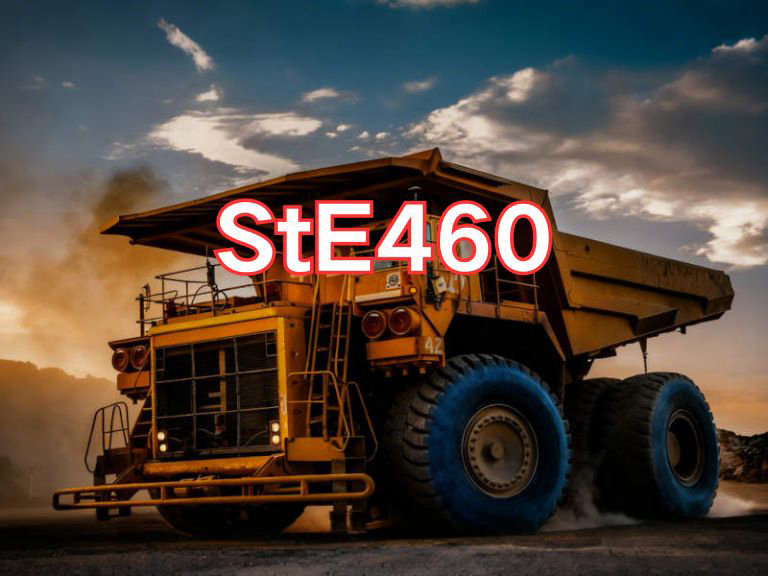

S355J0
S355J0 is a widely used high-strength, non-alloy structural steel, with its designation following the European standard EN 10025-2 naming system. In this system, "S" stands for "Structural steel," indicating it is designed for load-bearing and engineering structures; "355" refers to the specified minimum yield strength of 355 MPa at room temperature; "J" denotes the impact test category, meaning the steel must undergo Charpy V-notch impact testing; and "0" (zero) combined with "J" forms "J0," specifying that the steel must absorb a minimum of 27 joules (J) of energy at 0°C. Therefore, S355J0 is a hot-rolled structural steel guaranteed to maintain adequate toughness at low temperatures, offering improved impact resistance compared to the base grade S355JR (which requires testing only at +20°C). It is suitable for use in colder environments or applications demanding higher safety standards.
The primary characteristics of S355J0 steel plate include a well-balanced combination of strength, toughness, and weldability. Its tensile strength typically ranges from 470 to 630 MPa, with good elongation, enabling it to withstand dynamic loads and stress concentrations while maintaining structural integrity. Thanks to its low carbon equivalent, the steel exhibits excellent weldability and is compatible with various welding processes such as manual metal arc welding (MMA), submerged arc welding (SAW), and gas metal arc welding (GMAW). Welded joints are stable and reliable, generally requiring no preheating or only minimal preheating, which simplifies fabrication. Additionally, S355J0 offers good cold-forming properties, making it suitable for bending, stamping, and other forming operations in the production of complex structural components.
S355J0 is widely used in building structures, bridges, industrial facilities, cranes, transmission towers, construction machinery, commercial vehicles, and general steel structures where moderate low-temperature toughness is required. It is particularly suited for regions with cold winters or seasonal low temperatures, serving as a critical load-bearing material to enhance structural safety and resistance to brittle fracture.
The current standard for S355J0 steel plate is EN 10025-2:2019, titled Hot Rolled Products of Structural Steels – Part 2: Technical Delivery Conditions for Non-Alloy Structural Steels. Published in 2019, this version supersedes the previous EN 10025-2:2004 and represents the latest international specification. It specifies detailed requirements for chemical composition, mechanical properties, impact testing at 0°C, dimensional tolerances, and inspection procedures. As a key grade in the European structural steel system, S355J0 plays a vital role in ensuring structural safety under low-temperature conditions and is a widely trusted material in modern engineering design.

Ultrasonic Testing (UT)
A key non-destructive testing technique that uses high-frequency sound waves to detect internal flaws in steel plates. The probe emits sound waves, which reflect when encountering defects such as cracks or inclusions. The receiver captures the echoes, enabling precise determination of defect location and size. With high sensitivity, strong penetration, and fast inspection speed, UT effectively ensures internal quality, widely used in the production of heavy plates, pressure vessel plates, and other high-end products to guarantee safety and reliability.

Magnetic Particle Testing (MT)
A common surface inspection method that magnetizes the workpiece, causing leakage magnetic fields at surface or near-surface defects like cracks or inclusions, which attract magnetic particles to form visible indications. Simple to operate and highly sensitive, MT is suitable for rapid inspection of surface and near-surface flaws in ferromagnetic materials, widely used for online or offline inspection of plate edges, ends, and welds, ensuring product quality and safety.

Penetrant Testing (PT)
A non-destructive method for detecting surface-breaking flaws. A penetrant liquid is applied to the cleaned steel surface, allowing it to seep into defects such as cracks or pores. After removing excess penetrant, a developer is applied, causing the trapped penetrant to bleed out and form visible indications. Simple and cost-effective, PT is suitable for inspecting surface defects in various non-porous materials, commonly used for welds, castings, and complex components, effectively ensuring surface quality of steel plates.











